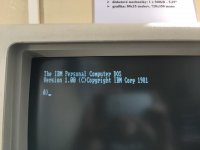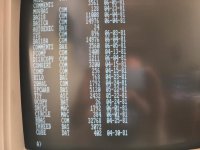SomeGuy
Veteran Member
The OS/2 museum has unearthed a May 1981 pre-release of IBM PC-DOS:
http://www.os2museum.com/wp/pc-dos-1-0-but-not-quite/
And PCjs has posted a webby emulator with an image here:
http://www.pcjs.org/disks/pcx86/dos/ibm/0.90/
PCjs is calling this "0.90" although there is nothing indicating that version in on the disk. It still calls itself IBM Personal Computer DOS 1.00, but is much earlier.
Notably, it does not prompt for a date at boot, it does not support EXE files, contains several development related tools, and includes a version of IBM Basic that does not require basic in ROM.
There is also a text file on the disk that gives even more details about development changes.
It will run on a release IBM PC.
http://www.os2museum.com/wp/pc-dos-1-0-but-not-quite/
And PCjs has posted a webby emulator with an image here:
http://www.pcjs.org/disks/pcx86/dos/ibm/0.90/
PCjs is calling this "0.90" although there is nothing indicating that version in on the disk. It still calls itself IBM Personal Computer DOS 1.00, but is much earlier.
Notably, it does not prompt for a date at boot, it does not support EXE files, contains several development related tools, and includes a version of IBM Basic that does not require basic in ROM.
There is also a text file on the disk that gives even more details about development changes.
It will run on a release IBM PC.











